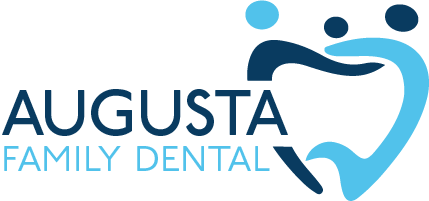
18 Nov Dental Education: A Historical Overview
Dental education has come a long way, transforming dentistry from a basic trade into a respected medical field. With countless advancements and dedicated individuals pushing the field forward, dental education has shaped the profession as we know it.
The Birth of Formal Dental Education
In the early 19th century, dentistry was far from the structured, regulated profession it is today. Dental practice was a trade, not a medical science, and practitioners learned through apprenticeships, typically watching an experienced dentist and then mimicking their techniques. This unstructured learning led to inconsistent quality and limited scientific knowledge.
In 1840, Dr. Horace H. Hayden and Dr. Chapin A. Harris took a groundbreaking step. Together, they founded the Baltimore College of Dental Surgery, the world’s first dental college. Their goal was to standardize dental training, ensuring that new dentists received formal education and scientific training. This milestone wasn’t just a leap for dentistry; it was the beginning of dental education itself.
Hayden and Harris aimed to elevate dentistry to a science. They envisioned dental professionals equipped with more than just technical skills but with the scientific background to understand oral health thoroughly. The college’s establishment brought credibility to the profession and marked the first time dental students learned through a structured curriculum, including subjects like anatomy and physiology, to inform their dental practice.
This first dental college laid the foundation for a worldwide shift, as other countries soon followed. Dental schools began to pop up across the United States and beyond, setting the stage for future advancements. It was the start of a movement to transform dentistry from an informal trade to a respected, regulated profession.
The Gies Report: A Turning Point in Dental Education
In 1926, the Carnegie Foundation funded Dr. William J. Gies to conduct a thorough study on the state of dental education in the U.S. and Canada. Dr. Gies, a biochemist by trade, took on the task with an open mind, aiming to bridge the gap between dentistry and science. His research was comprehensive, examining various dental schools and methods used in training.
The findings, known as the Gies Report, were transformative. Dr. Gies recommended that dentistry be treated as an extension of medicine, grounded in rigorous scientific study. He advocated for standardized dental curricula, scientific research integration, and university-affiliated dental schools. Before this report, many dental schools operated independently, focusing mainly on clinical practice with little scientific grounding.
The Gies Report highlighted that dentists needed scientific knowledge, not just technical skills, to provide quality care. This report ultimately changed dental education forever, making it mandatory for dental programs to include courses on biology, chemistry, and human physiology. It was one of the first steps toward establishing dentistry as a serious, evidence-based profession, on par with medicine.
Thanks to the Gies Report, dental schools across North America adopted a science-focused curriculum, bringing credibility to the field and attracting students eager to become highly trained professionals. It also reinforced the need for dental research, which has since led to countless innovations in dental care, treatments, and procedures.
The Role of Professional Organizations in Advancing Dental Education
Professional organizations have played a huge role in shaping dental education over the years. The American Dental Association (ADA), founded in 1859, has been instrumental in advocating for high standards in dental care and education. The ADA emerged at a time when dentistry was becoming more organized and dentists needed representation.
As the ADA grew, it established regulations that would set the standard for dental schools, practice, and ethics. The association actively worked to set up accreditation processes for dental schools, ensuring that these institutions provided high-quality education aligned with professional standards. It also helped dental schools stay updated on advancements and encouraged scientific research within the field.
The ADA’s involvement in dental education has not only set a high bar for students but has also created a culture of continued learning. By promoting research and setting guidelines, the ADA helps to advance the field and ensure that dentists are well-trained and prepared for new challenges. This has led to a standardized level of care across the U.S., allowing patients to trust that they are receiving safe, competent treatment no matter where they go.
Over time, the ADA has influenced changes in dental curricula and helped adapt dental education to reflect the latest technologies and discoveries. This ongoing work has made the ADA a cornerstone of dental education, promoting high standards that benefit both students and patients.
The Rise of Dental Specialties and Advanced Education
As the field of dentistry developed, it became clear that a “one-size-fits-all” approach wouldn’t serve all patients. Dental education soon began to branch into specialized fields, allowing practitioners to focus on areas like orthodontics, periodontics, and oral surgery. Each specialty required its own set of skills, knowledge, and training.
This move toward specialization started gaining traction in the early 20th century. Dentists with advanced training in particular fields could offer more focused and effective treatments, which was a big win for patients. Specialization also increased the need for continuing education, as each area of dentistry required in-depth understanding and practice.
The rise of dental specialties required new educational paths, leading to specialized programs that train dentists in specific areas. Today, dentists can pursue certification in various specialties, expanding the range of treatments available to patients. This shift allowed dental education to accommodate the diverse needs of society, making dentistry more effective and tailored to individual needs. Specialization has pushed dental education to continually evolve, ensuring that students learn the latest skills and techniques needed in their chosen fields.
Technological Advancements Transform Dental Education
Technology has been a game-changer for dental education, providing tools that were unimaginable decades ago. Radiographs, for example, transformed diagnostics by allowing dentists to see inside patients’ teeth and bones without invasive procedures. This innovation alone significantly changed dental education, as students could learn diagnostics based on visible evidence rather than assumptions.
Over the years, dental schools have continued to incorporate new technologies into their curricula. High-speed drills, dental lasers, and digital imaging are just a few examples that have redefined how students learn. Many modern dental schools now offer training with virtual simulators, enabling students to practice procedures in a digital environment before working on real patients.
3D printing is also making waves in dental education. It allows students to create accurate dental models, practice techniques, and customize prosthetics. This hands-on experience with cutting-edge tools ensures graduates are well-prepared for modern practices.
Technology isn’t just about tools; it’s also about improving the learning experience. Online modules, interactive learning, and advanced patient simulation allow students to learn and practice in diverse ways. This integration of technology into dental education marks a new era, giving students the skills they need to succeed in a tech-driven world.
Conclusion
Dental education has evolved dramatically over the years, moving from apprenticeship to formal education, incorporating science, and embracing technology. Each of these milestones has elevated the field, ensuring that today’s dentists are well-trained, knowledgeable, and equipped to provide the best care. Understanding the history of dental education helps us appreciate how far the profession has come and how it continues to adapt to meet the needs of patients in a rapidly changing world.
At Augusta Family Dental, we want to make sure our patients have access to all the dental knowledge they need to find out what is best for them. For more information about how you can learn about dental care, schedule an appointment with us today!

About Our Team
Our team of dental experts has well over 30 years of combined experience in the field of dentistry. To learn more about them, please visit the team pages for Hephzibah, Washington Road, Summerville, and Medical District locations.

Sorry, the comment form is closed at this time.